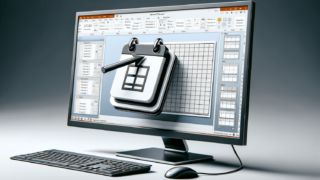
How to Use the Rehearse Timings Feature in PowerPoint?
Written by: Bill Whitman
Last updated:

How to Use the Rehearse Timings Feature in PowerPoint
PowerPoint’s Rehearse Timings feature is paramount for effectively managing presentation lengths, ensuring your content accurately fits within allotted timeframes. Mastering this tool can significantly enhance presentation delivery, making it a critical skill for professionals.
Category: PowerPoint Tutorials
Step-by-Step Guide
1. Access Rehearse Timings
– Begin by opening your PowerPoint presentation. Navigate to the Slide Show tab on the ribbon and click on Rehearse Timings.
– Ensure your slides are finalized as timing adjustment is the last step before the actual presentation.
2. Start Rehearsing Your Presentation
– Once you click Rehearse Timings, your presentation will start in full-screen mode. A timer box will appear, showing the elapsed time for the current slide.
– Advance through your slides manually using the right arrow key or by clicking the mouse. The timer will reset for each new slide, allowing you to allocate specific times based on content complexity.
3. Adjusting Slide Timings
– If you spend too much or too little time on a slide, you can pause and reset the timer by right-clicking and selecting Restart from the context menu. Continue through your entire deck, adjusting as necessary.
– Use visual aids like images or bullet points as cues for timing control which are effective strategies.
4. Save and Review Your Timings
– After completing your rehearsal, a prompt will appear asking if you want to save the timings. Click ‘Yes’ to apply them directly to your presentation.
– To review or adjust specific slides, simply navigate to the Transitions tab and you’ll see the timings displayed under each slide preview in the grid view.
Pro Tips
– Practice multiple times to smooth out transitions and improve precision in your delivery.
– Use the keyboard shortcuts like ‘N’ for next and ‘P’ for previous to make slide transitions seamless during rehearsal.
– Always have a backup plan, such as a printed outline of your presentation, to avoid reliance solely on the timing feature.
Troubleshooting Common Issues
| Issue | Solution |
|---|---|
| Timings are too rigid | Adjust the timings manually in the Transitions tab to allow more flexibility based on audience engagement. |
| Timer not starting | Ensure you start from the Slide Show tab and select Rehearse Timings, not from the current slide preview. |
Advanced Techniques
– Overlay real-time feedback: Use audience tools to gather live feedback for adjusting timings in future rehearsals.
– Combine with narration: Record your presentation with timings to create a self-running presentation perfect for virtual settings.
Compatibility Notes
– The Rehearse Timings feature is available in PowerPoint 2010 and later versions, with enhanced functionalities in the latest releases.
– Different versions of PowerPoint may have variations in accessing and saving timing settings, always check version-specific guides.
Conclusion
Mastering the Rehearse Timings feature in PowerPoint can dramatically improve the effectiveness of your presentations. Try experimenting with this feature, and also explore PowerPoint’s other tools like custom animations to make your presentations even more engaging.
FAQ
1. Q: Can I use Rehearse Timings on a Mac?
A: Yes, PowerPoint for Mac supports the Rehearse Timings feature, with steps similar to those for Windows.
2. Q: What if my presentation is longer than expected?
A: Rehearse and adjust the timings until you meet the expected timeframe, or consider shortening content to ensure a concise delivery.
3. Q: How do I disable saved timings?
A: Open the Transitions tab, select all slides, and under the Timing group, unset the After checkbox.
Featured Posts
- No pillar pages found.








